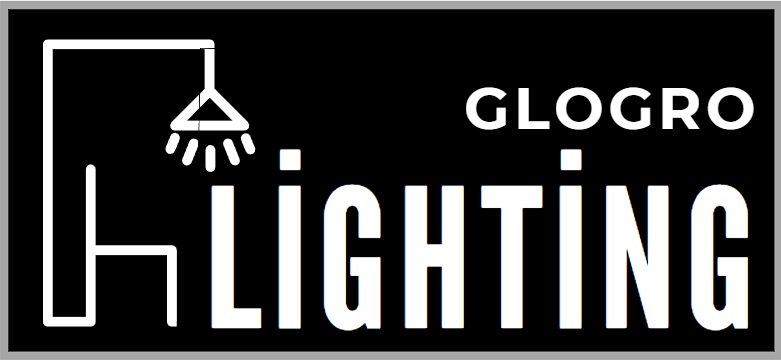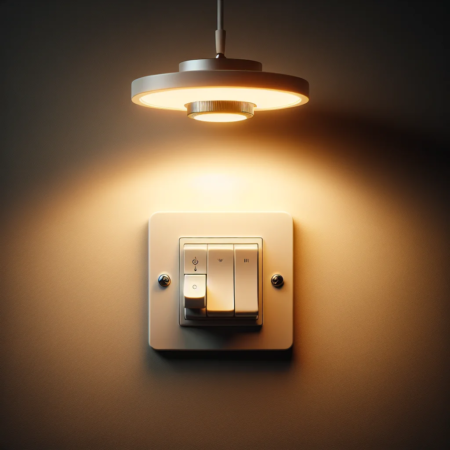Contents
Understanding the Basics of Dimmable LED Ceiling Lights
Dimmable LED lights offer versatile lighting options, allowing you to adjust the brightness according to your needs. These lights can be dimmed using different types of dimming options, such as mains dimming, which reduces the power to the LED light source by blocking a fraction of the voltage.
Other popular dimmable LED light bulbs include the Great Eagle A19, Philips Hue LED B22, Ascher Dimmable E26, and AmazonBasics LED E27 Edison Screw Bulb.
Explanation of Dimmable LED Lights
Dimmable LED lights are highly energy-efficient, providing significant savings on electricity bills. By adjusting the brightness level, these bulbs allow you to use only the necessary amount of light, resulting in substantial energy conservation.
Additionally, dimmable LED lights have a longer lifespan of up to 50,000 hours, outlasting traditional incandescent or halogen bulbs.
Benefits of Using Dimmable LED Ceiling Lights
When you dim your LED ceiling lights, you use less energy to provide lighting to your space, contributing to energy savings. This not only benefits the environment by reducing carbon emissions but also helps lower your monthly electricity bills.
Moreover, dimmable LED ceiling lights offer enhanced ambiance and energy efficiency in every room, making them a popular choice for homes and commercial spaces.
LED Ceiling Light Dimmable: Benefits and Uses Furthermore, LED ceiling lights that are dimmable not only consume significantly less energy than traditional light sources but also ensure a prolonged lifespan, making them a cost-effective and sustainable lighting solution for various applications. Prioritizing safety during the installation process is crucial, so it’s important to follow safety precautions and compatible installation steps to enjoy the benefits of versatile and energy-efficient lighting in your space.
LED Lighting Maintenance To ensure a prolonged and efficient lifespan for dimmable LED ceiling lights, regular maintenance is essential. Proper care and maintenance not only extend the lifespan of the fixtures but also ensure consistent and optimal performance, keeping your LED lights shining bright for years to come.
Step-by-Step Guide on How to Wire Dimmable LED Ceiling Lights
To wire your dimmable LED ceiling lights, gather the necessary tools and materials including a screwdriver, wire connectors, voltage tester, wire stripper, and the dimmable LED lights. Yes, it’s crucial to have the correct tools for the job to avoid interruptions. Turn off the power supply to the existing ceiling light fixture and use a voltage tester to confirm the power is off before proceeding. Yes, this is a critical safety measure to prevent electrical accidents. Carefully remove the existing ceiling light fixture by unscrewing the mounting screws or nuts and disconnecting the wires from the ceiling. No damaging the ceiling or fixture.
By identifying the wiring configuration of your dimmable LED ceiling lights, connect the corresponding wires from the ceiling to the fixture and ensure the connections are securely fastened using wire connectors. No loose wiring. Once the wires are successfully connected, securely position the dimmable LED ceiling light fixture against the ceiling and fasten it in place using the provided hardware to achieve a neat and professional finish. Finally, turn the power back on and use a voltage tester to ensure the power is running to the fixture as expected. Congratulations, you have successfully wired your dimmable LED ceiling lights!
Step 1: Gather necessary tools and materials
To start wiring your dimmable LED ceiling lights, make sure you have the essential tools and materials on hand, including a screwdriver, wire connectors, voltage tester, wire stripper, and of course, the dimmable LED ceiling lights. It’s crucial to ensure that you have the correct tools for the job to avoid any interruptions during the installation process.
Step 2: Turn off the power
Before getting started, it’s absolutely imperative to turn off the power supply to the existing ceiling light fixture. This is a critical safety measure that must not be overlooked to prevent any electrical accidents.
Use a voltage tester to confirm that the power is indeed off and ensure that the circuit is not live before proceeding.
Step 3: Remove the existing ceiling light fixture
Once the power is turned off and verified, carefully remove the existing ceiling light fixture. This typically involves unscrewing the mounting screws or nuts and disconnecting the wires from the ceiling.
Take your time to do this cautiously and avoid causing damage to the ceiling or the fixture itself.
Step 4: Connect the dimmable LED ceiling light wires
Identify the wiring configuration of your dimmable LED ceiling lights. You should typically have black, white, and ground wires.
Carefully connect the corresponding wires from the ceiling to the dimmable LED fixture. Ensure that the connections are securely fastened using wire connectors to avoid any loose wiring.
Step 5: Secure the new fixture in place
After successfully connecting the wires, it’s time to securely position the new dimmable LED ceiling light fixture. Gently push the light against the ceiling and fasten it in place using the provided hardware.
Ensure that the fixture is stable and flush with the ceiling for a neat and professional finish.
Step 6: Turn the power back on
Once everything is securely in place, and you’ve double-checked all your connections, it’s finally time to turn the power back on. Use your voltage tester again to ensure that the power is running to the fixture as expected.
Congratulations, you have successfully wired your dimmable LED ceiling lights!
Understanding the latest trends and best practices in search engine optimization (SEO) and content marketing is crucial for anyone aiming for improved rankings. Companies are now focusing on quality content creation, voice search optimization, and mobile responsiveness to stay ahead of the digital curve.
By implementing these strategies effectively, businesses can ensure a strong online presence and visibility to their target audience.
When concluding a research paper, it is essential to reiterate the main findings and recommendations, providing a succinct overview of the study’s significance. This final section should serve as a comprehensive summary, reiterating key ideas while also offering a clear “take-home” message for the readers to remember.
To craft SEO-boosting articles that enhance Google ranking, it is vital to comprehend the significance of SEO and its impact on content visibility. By aligning content with relevant keywords, optimizing metadata, and improving website structure, businesses can enhance their online visibility and reach a broader audience, ultimately boosting their search engine rankings.
When evaluating the relevance of search results, it is important to understand the complexity of search engine algorithms and the process of crawling, indexing, and analyzing web pages. By grasping these concepts, individuals can effectively gauge the relevancy and quality of search results, ensuring a more tailored and refined online experience.
Developing an effective SEO strategy requires a meticulous approach that involves performing a detailed audit of the current website, conducting thorough keyword research, and optimizing content to align with search intent. By focusing on content design and building quality backlinks, businesses can create a winning SEO strategy that drives organic traffic and improves search engine rankings.
Creating an SEO-friendly conclusion is imperative for reinforcing the article’s main focus and driving home the main issue. By utilizing the focus keyphrase and aligning the conclusion with the main topic, writers can ensure that their content remains SEO-friendly and resonates with readers effectively.





